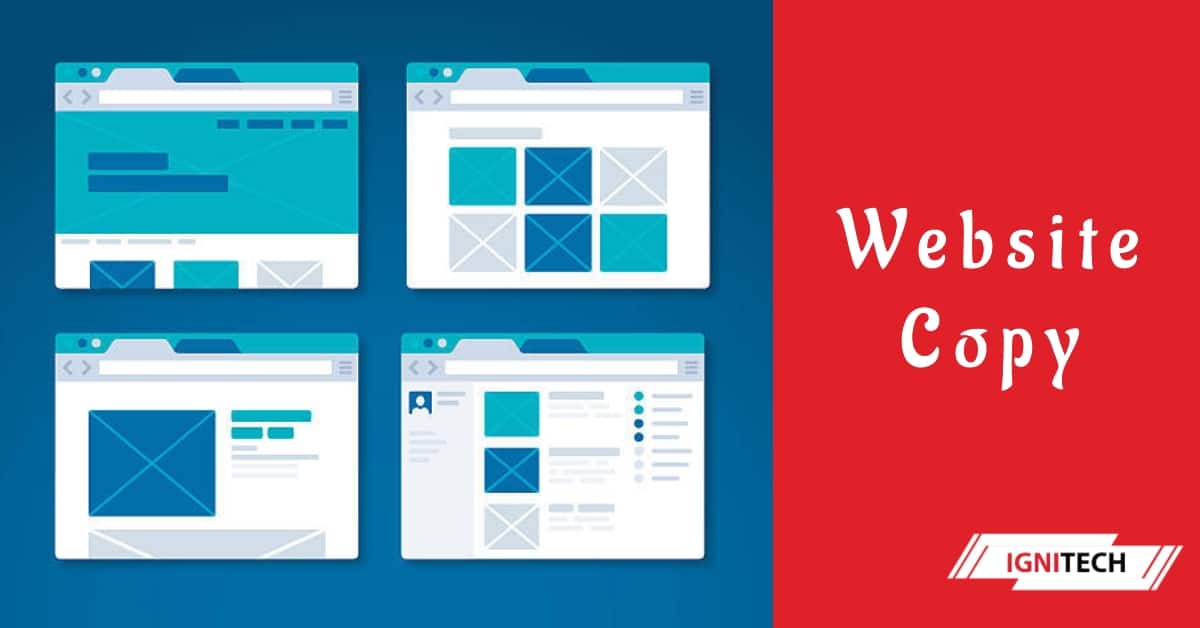Website copy is the words, phrases, and content that appear on a website. From product descriptions to blog posts, the copy on a website plays a crucial role in shaping the user experience and driving conversions. However, crafting compelling website copy that gets results can be quite challenging.
As we enter 2024, website owners need to level up their copywriting game to succeed. With ever-evolving search algorithms, shrinking attention spans, and more competition, weak website copy can severely impact traffic, leads, and sales. Fortunately, with some smart strategies and optimization best practices, your website copy can captivate audiences and skyrocket your success next year.
This article reveals seven hacks to transform your website copy and set you up for maximum achievements in 2024 and beyond. Let’s dive in to learn how to craft winning website copy that converts.
Defining Website Copywriting

Website copywriting is the strategic use of words to convey information and evoke emotions that resonate with your target audience. It involves creating text for websites with the primary goal of capturing attention, retaining interest, and ultimately converting visitors into customers.
Crafting a Captivating Narrative The success of a website often hinges on the effectiveness of its copy. A well-crafted copy can turn a casual visitor into a dedicated customer. It’s about striking a balance between informative content and persuasive language, ensuring that your audience not only understands your offerings but feels compelled to act.
Key Elements of Effective Copy
- Clarity: Clearly communicate your value proposition and key messages. Avoid jargon that might confuse or alienate your audience.
- Conciseness: Keep your sentences and paragraphs concise to maintain reader engagement. Capture attention quickly and sustain interest throughout.
- Call to Action (CTA): Strategically place CTAs to guide visitors toward desired actions. Use compelling language that encourages immediate response.
7 Hacks To Craft A Winning Copy

Understanding Your Audience is the Foundation of Successful Website Copy
The first key to crafting high-converting website copy is understanding your target audience inside and out. Your content should resonate with their pain points, goals, and preferences if you want it to convince them to take action.
Start by creating fictional buyer personas that capture the key demographics, behaviors, concerns, and motivations of your different audience segments. Give them names and backgrounds to humanize them. Refer back to these buyer personas as you write to keep your messaging focused and compelling.
Conduct user research by surveying actual customers and website visitors when possible. Learn why they purchase from you, what frustrates them, and what content best speaks to their needs. Incorporate these learnings into sharper audience targeting with your copy.
| Tip | Explanation |
|---|---|
| Define audience personas | Fictional representations of your target customers that capture demographic and psychographic details |
| Interview actual customers | Direct customer feedback provides invaluable context for copywriting |
| Analyze analytics for insights | Review metrics like top-performing pages and conversion fall-off points |
The stronger your understanding of your audience, the better you can tailor your website copy to their viewpoints for higher conversion rates. You’ll write in a more relevant voice with messaging that powerfully answers their questions and addresses their concerns.
Craft Persuasive Messaging That Triggers Emotions
Your website copy shouldn’t just provide information – it needs to persuade visitors to take action by triggering the right emotions. Carefully incorporate power words, metaphors, rhetorical questions, humor, and stories to strike an emotional cord with readers.
Evocative phrases like “unparalleled performance”, “indispensable efficiency”, “worry-free reliability”, and “cost-effective solution” stimulate desire by painting a vivid picture of using your product or service. Extended metaphors subtly influence perceptions by linking your offering to something readers already understand or value.
Rhetorical questions like “What if performance didn’t have to come at a premium cost?” make readers mentally justify claims on their own. An occasional dose of humor eases tensions from serious considerations like large purchases. Real-world stories bring statistics to life with relatable context readers connect with.
| Technique | Example | Impact |
|---|---|---|
| Power words | “unparalleled performance” | Stimulates desire |
| Metaphors | “Like a Swiss army knife for marketers…” | Links to familiar concepts |
| Rhetorical questions | “What if you could grow revenue without expanding headcount?” | Readers self-justify claims |
| Humor | “We help David take down Goliath” | Provides emotional break |
| Stories | “Meet Jane. Last year her company doubled leads…” | Relatable context |
Take time to purposefully incorporate these emotional triggers throughout your website copy. They amplify the effect of your persuasive messaging for higher conversions.
Optimize Website Copy for Search With SEO Best Practices
It takes more than just compelling website copy alone to succeed – your content also needs to actually be found by your audience. This makes search engine optimization (SEO) an indispensable piece of the website copywriting process to drive traffic.
Follow on-page SEO best practices with your copy, including:
- Incorporating your target keywords naturally in headings, body text, URLs, alt text, and metadata
- Creating keyword-focused title tags using power words that grab attention
- Answering audience search queries directly with focused content
- Breaking text into scannable sections with bulleted lists and bolded text for easy skimming
- Including related latent semantic indexing (LSI) keywords to support discovery
Technical optimizations like site speed, security, and mobile responsiveness also boost organic rankings and visibility for your persuasive content.
Make SEO-optimized copywriting standard practice on blog posts, landing pages, and product descriptions. The higher your pages rank in search, the more value your compelling website copy will be able to provide.
Map the Audience Journey to Place Copy at Conversion Touchpoints
Your website copy won’t perform if it’s not strategically placed where your audience is most receptive to its messages. Map buyer journeys to identify key conversion touchpoints. Then develop tailored copywriting to target visitors at each stage.
For example, an eCommerce journey may include:
- Awareness: Blog post articles to attract search traffic
- Interest: Product page descriptions piquing desire
- Evaluation: Customer testimonials reducing risk
- Purchase: Checkout confirmation messaging encouraging loyalty
- Loyalty: Review request emails promoting advocacy
Create a conversion funnel framework mapping out your expected audience journey model. Tailor website copy at each level to motivate the desired action, whether it’s browsing products or writing referrals. Then track metrics over time to refine your funnel for continuous optimization.
Test Different Website Copy Variations
Even when target audience research, emotional triggers, SEO, and buyer journey mapping are fully accounted for, experimentation is still key. The nuances of website copywriting mean there are endless variations that could improve conversions.
Set up A/B tests for your highest-traffic landing pages and emails to find out what works. Try rearranging paragraphs, adding subheadings, or using different calls to action. Testimonials, images, and gated content are also easy web copy elements to experiment with.
Make iterative changes over time guided by performance data. Small tweaks can have an outsized impact. For example, HubSpot experimented with its homepage headline in 2017, increasing conversions by 252% simply by changing 2 words.
Don’t settle with a single version of website copy without testing alternatives – you’ll likely be leaving conversions on the table. Experimentation helps unlock maximum performance.
Embrace Creativity in Website Copywriting
It’s easy for website copywriting to become formulaic, but compelling conversion-focused content requires creativity. Don’t be afraid to channel innovation – take lessons from famous speeches, take an improv class, or imitate poetry structures to stir creative juices.
Try imagining you’re the persona you created earlier and writing directly to yourself. How would you want to receive the information? What creative analogies or themes would catch your eye?
Collaborating with team members, artists, or even customers also fertilizes creative copywriting ideas. Bring fresh outside perspectives to the drafting table. Creative website copy ultimately comes down to evoking the familiar in an unfamiliar way. Find new inspirations, frameworks, or voices to break conventional industry molds.
Analyze Website Copy Performance With Key Metrics
The final ingredient for continuously improving website copy over time is in-depth analytics using both quantitative and qualitative metrics.
Quantitative conversion rate data shows objective performance for guiding refinements. Are visitors from different channels converting at different rates? Do mobile users fall-off faster than desktop? The answers inform copy tailored to specific contexts.
But qualitative feedback provides equally crucial context. Send follow-up surveys asking what information site visitors found most or least compelling. Customer service teams also regularly receive copy-related praise or complaints.
Analyze both metric types to pinpoint copy opportunities – then keep experimenting and optimizing based on ever-evolving insights over time. The keys to website copywriting success are perpetual learning and iteration.
What does a website copywriter do?

A website copywriter creates written content for websites and landing pages that informs, engages, persuades, and moves visitors to take desired actions.
Key responsibilities of a website copywriter typically include:
- Conducting keyword research to optimize content for search engines (SEO)
- Producing compelling copy for key pages like the home page, product pages, pricing pages, blog, about us, etc.
- Crafting effective headlines, calls to action, email marketing campaigns
- Understanding the target audiences and creating personalized messaging that speaks directly to their needs
- Collaborating with designers, developers, and marketers to produce cohesive web experiences
- Writing COPY that builds brand voice and aligns with broader business goals
- Running A/B tests to continually refine copy effectiveness
- Monitoring analytics to identify poorly performing pages and improving copy to increase engagement and conversions
The ultimate role is to use words strategically across the website that inform and persuade visitors in order to meet key business objectives – whether building brand awareness, generating leads, or driving sales.
7 Keys to Unlocking Website Copywriting Success
Effective website copy doesn’t happen by accident – it requires in-depth audience understanding, emotive persuasive writing, technical optimizations, strategic placement, experimentation, creativity, and analytics. By focusing on these seven keys over the next 12 months, you’ll be primed for website copywriting success in 2024:
- Know your target audience: Create detailed buyer personas and constantly gather customer insights
- Trigger emotions: Use power words, metaphors, questions, humor and stories
- Optimize for search: Follow SEO best practices for maximum visibility
- Map the journey: Place copy at conversion touchpoints across the buyer funnel
- Test variations: Experiment with different layouts, offers and calls to action
- Get creative: Draw inspiration from diverse sources to spark innovative copy
- Analyze performance: Leverage both quantitative metrics and qualitative feedback
The above best practices take dedication, but the long-term payoff is well worth the effort. Compelling website copy entices visitors to engage, informs their decision-making, reduces barriers, and motivates desired actions. There’s no greater driver of website success.
As we move into 2024, now is the time to step up your website copy to drive more traffic, boost conversions, improve loyalty and delight your audience. Use these seven hacks to craft winning copy that powers your success next year and beyond.
Understanding your audience, learning from competitors, optimizing for SEO, appealing to emotions, driving micro-commitments and relentlessly testing your copy are proven strategies for copywriting excellence. Keep these principles in mind to create web content that captivates and converts throughout every stage of the customer journey.
Level up your website copy game in 2024 and get ready to reach new heights! The foundational role dynamic copy plays in online business success cannot be overstated. Put these hacks into practice now to craft words and messaging that truly delight, engage and persuade each time.
FAQs
Some top best practices for writing effective website copy include: know your audience inside and out through buyer personas and user research; focus on crafting emotive persuasive messaging with power words, metaphors, rhetorical questions, humor, and stories; follow SEO optimization guidelines; map out and target key conversion stages in the audience journey; run A/B tests on copy variations; tap creativity from diverse inspirations; and continually analyze performance with both quantitative and qualitative data.
To write high-converting website copy, ensure it speaks directly to audience concerns, goals and preferences; incorporates emotional triggers like power words and customer stories; answers audience questions and reduces barriers clearly; follows technical SEO optimizations for discoverability; appears at strategic touchpoints across devices when visitors are receptive; and is continually refined through analysis and testing for improvement over time.
An effective call to action within website copy is benefit-driven, action-oriented, urgent, and consistent with the preceding content. It should promise readers a desirable outcome from following the CTA, use imperative language directing an explicit behavior, convey scarcity or urgency, and align seamlessly with the overall page messaging.
Good meta descriptions for SEO clearly and succinctly summarize page content in an engaging way using power words, while incorporating relevant target keywords naturally. They intriguingly tease the content that follows to entice clicks, rather than just describing topics. Meta descriptions help searchers know your content answers their queries.
To optimize website copy for mobile, make use of short, scannable sentences and paragraphs with ample white space. Include bulleted lists for easy skimming, anchor CTAs smartly, and ensure text fields auto-expand for mobile keyboards. Confirm designs display responsive UX on varying screen sizes. Shortened copy on squeezed screens can optimize engagement.
Testing website copy iterations is critical because small nuanced tweaks can produce outsized impacts on conversion rates. There are always undiscovered better performing variations. Testing changes to headlines, layouts, offers and more via A/B testing reveals the best versions for optimizing copy effectiveness. Experimentation fuels continual optimization.
Yes, plagiarizing any creative work – including website copy – is illegal under copyright law.
If you copy significant portions of text or even ideas and messaging from elsewhere online and pass it off as your own original work on a business website, blog, marketing materials or advertisements, the original author can file a copyright infringement claim demanding compensation or court action.
Some key details on plagiarism legality for website copy include:
Any text, photos or media not created by your company requires citation of the source if published. Even with citations, use of full verbatim passages from copyrighted materials requires explicit reprint permission in most cases under fair use laws. Creative works fall under automatic copyright by default once produced.
Reorganizing or lightly editing plagiarised copy still counts as illegal use. Even with minor word changes or sentence restructuring, passing off the core ideas, messaging, descriptions etc. as your own remains prohibited intellectual property theft. Unique authorship is required.
Specifically for SEO, Google willmanual penalize entire sites caught copying competitors’ web pages or even Wikipedia/database article excerpts to try ranking higher. The consequences for shady black hat tactics can completely derail an internet business.
In short – stealing website copy will land you in legal trouble while also tanking your standing with Google. Produce 100% original writing or licensed reprints only to avoid plagiarism violations. For affordable website content done right, professional freelance copywriters provide ethical, optimized copy solutions for businesses small and large.
 Anas is our go-to copywriter with a knack for crafting persuasive and high-converting eCommerce landing pages. His passion for words and understanding of consumer psychology helps turn visitors into loyal customers. When he's not refining his copy, Anas enjoys exploring the latest digital marketing trends and experimenting with new writing techniques. His blend of creativity and strategic thinking makes him an indispensable part of our energetic team.
Anas is our go-to copywriter with a knack for crafting persuasive and high-converting eCommerce landing pages. His passion for words and understanding of consumer psychology helps turn visitors into loyal customers. When he's not refining his copy, Anas enjoys exploring the latest digital marketing trends and experimenting with new writing techniques. His blend of creativity and strategic thinking makes him an indispensable part of our energetic team.












